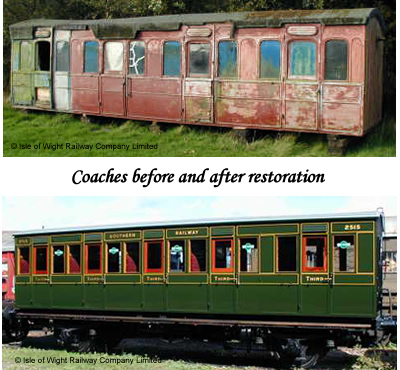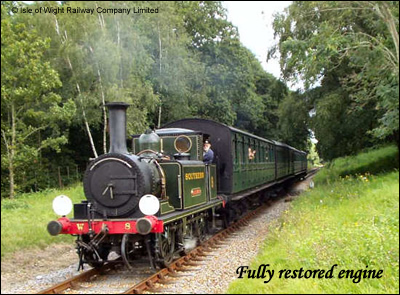My husband John was made redundant, at the age of 49, when the air conditioning firm where he had worked for 30 years closed down and relocated to the mainland. After trying desperately to find another job, and being told, “Sorry, you’re too old”, he decided he would become a volunteer at the Havenstreet Steam Railway.
He was soon enjoying the life at the railway, learning how to keep the line and the signals in good working order. He often ‘walked the line’ inspecting the fishplates and the rails to make sure everything was safe for the trains to take the visitors for rides, or placing oil lamps at the top of the signals so they could be seen at night. He was actually working harder at the railway than in his previous job and enjoying every minute.

Having researched John’s side of the family tree I discovered that his grandfather had been in the Royal Navy for several years. On leaving the Navy he had become a wheel-tapper on the railway until his untimely death, just 11 weeks after John’s father was born. When a train waited at the station, the wheel-tapper would walk beside the train. He would check each wheel by striking it with a special hammer and would be able to tell if there was a fault in the wheel by the sound it made. If a problem was found it would be reported, and the train would be delayed until the carriage or wagon with the defective wheel was removed.
The railway came to the Isle of Wight in 1862, linking Newport and Cowes, and then the line between Ryde and Newport was opened 1875. By 1890 there was a network of lines covering the island. Before the railway came people would have had to walk from one place to another or, if they could afford it, they would ride on a horse or pony; or even in a carriage pulled by horses.

Goods were often taken by handcart from place to place. My great grandfather, who had a market garden, would often send one of his sons out with a laden handcart and tell him to take it to the nearest village or town to sell their produce. This was about 6 miles away and must have been very difficult in bad weather. Even with the coming of the railway many people wouldn’t have been able to afford to use it, and so would still have had to walk everywhere.
Once the mainline trains had extended to the south, the island became a tourist attraction and this brought much needed revenue to island people, who were relatively poor. Even Queen Victoria, who would often spend time at Osborne House, used the railway. She had her own private carriage, which has been preserved and is in use at Havenstreet. When the Queen and Prince Philip visited the railway the Queen used this private carriage, while the Duke travelled on the footplate of the engine.
The first railway closures on the island began in 1952, and the last steam train on the Island ran on 31st December 1966. Thankfully, a small group of rail enthusiasts got together and raised enough funds to preserve one of the last steam locomotives, the W24 Calbourne, and a number of the remaining carriages. Some of these were built between 1864 and 1898. The carriages were rebuilt from bodies that had been sold to people for holiday homes or garden sheds.

When you see the carriage before restoration and then see it again in its full glory, you have to marvel at the wonderful work these volunteers do. The engines, which sometimes came to the railway as rusting shells, have been restored to magnificent working engines again. Unfortunately, as the engines get older, this restoration work gets more expensive and money is always needed to keep these steam engines in good working order.
The Havenstreet Steam Railway has won many awards for the ‘Best Preserved Railway’ and has also appeared in some films, one being Lady Chatterley’s Lover.The railway has gradually been extended from Havenstreet towards Smallbrook Junction and Wootton, and several of the original engines that worked on the island have been lovingly restored and brought back into service. Many of the old Victorian carriages have also been restored to their original condition.
The photographs in this article have been reproduced with the kind permission of the Isle of Wight Steam Railway
Wendy Pusey
© Wendy Pusey 2009
Sources
Literature from Isle of Wight Steam Railway